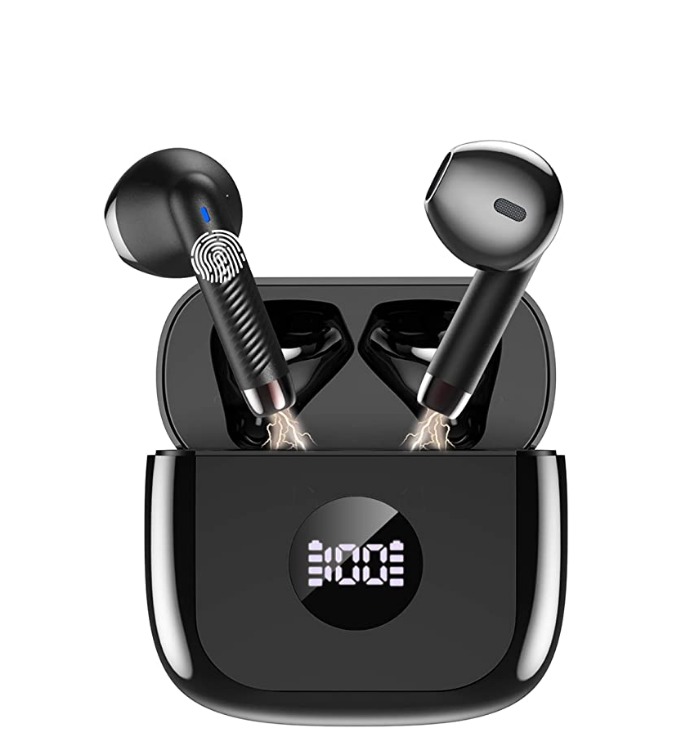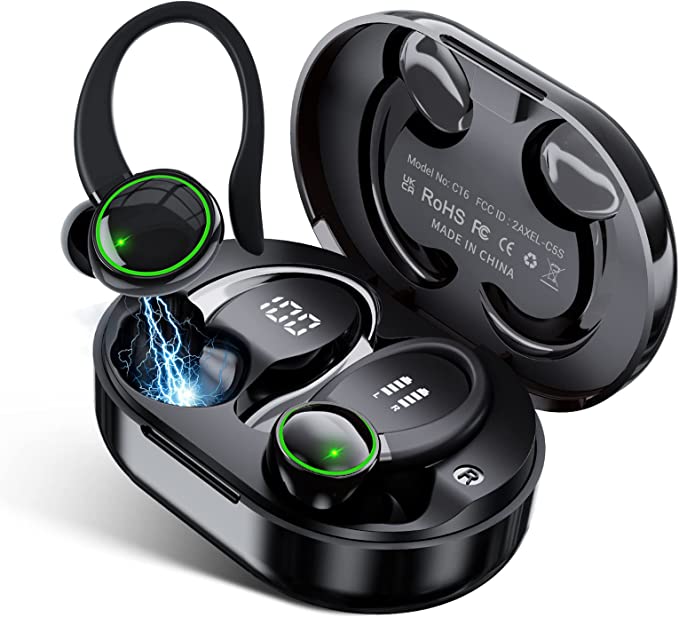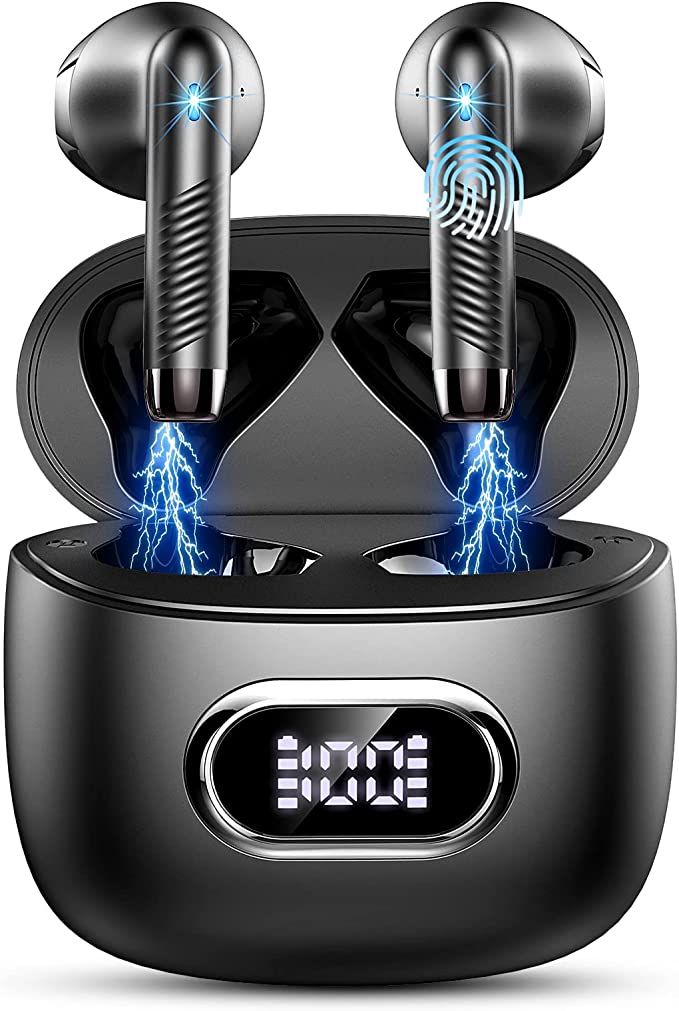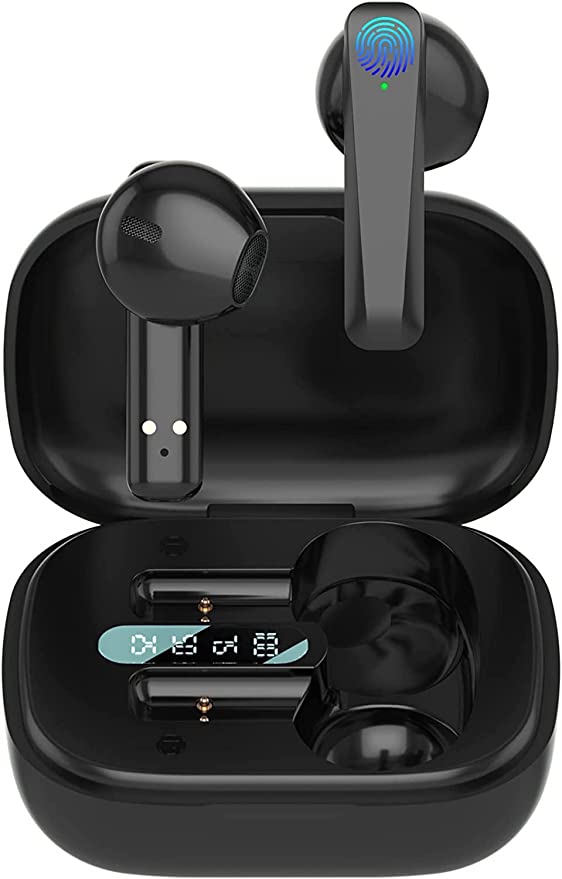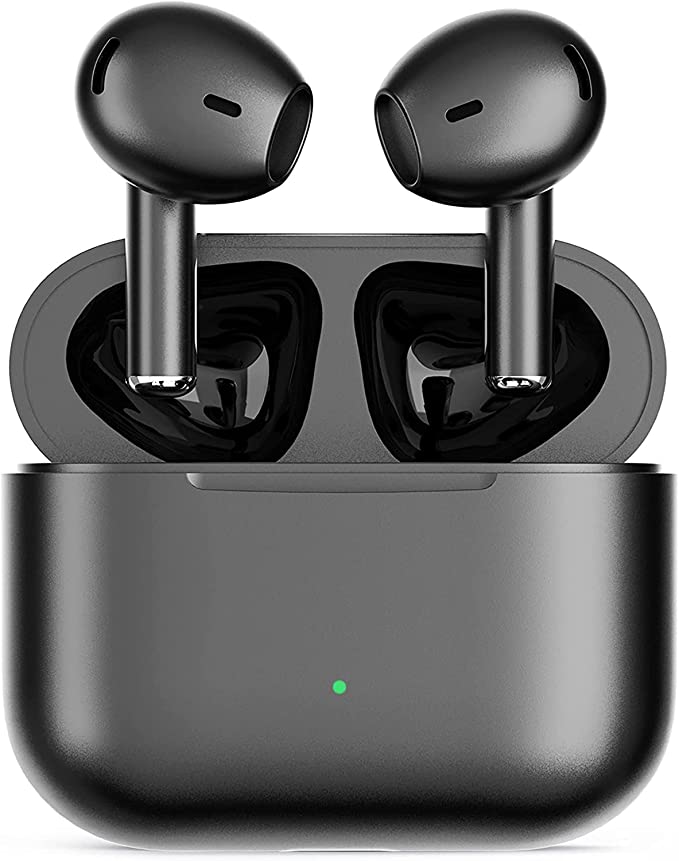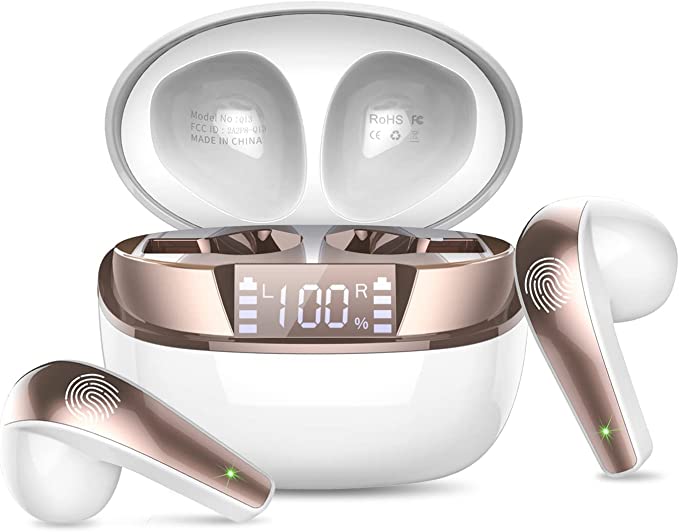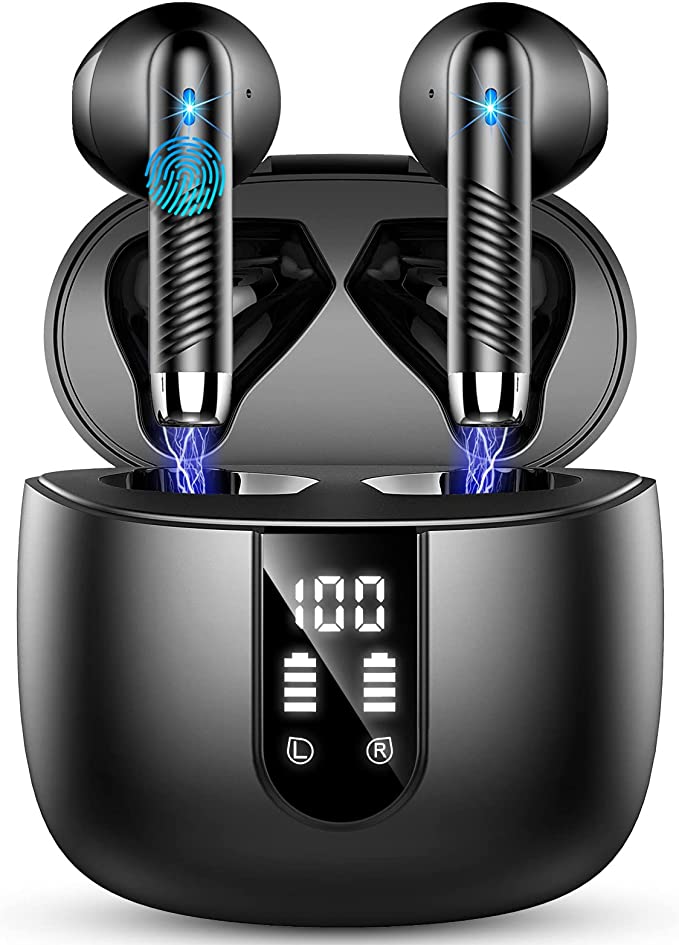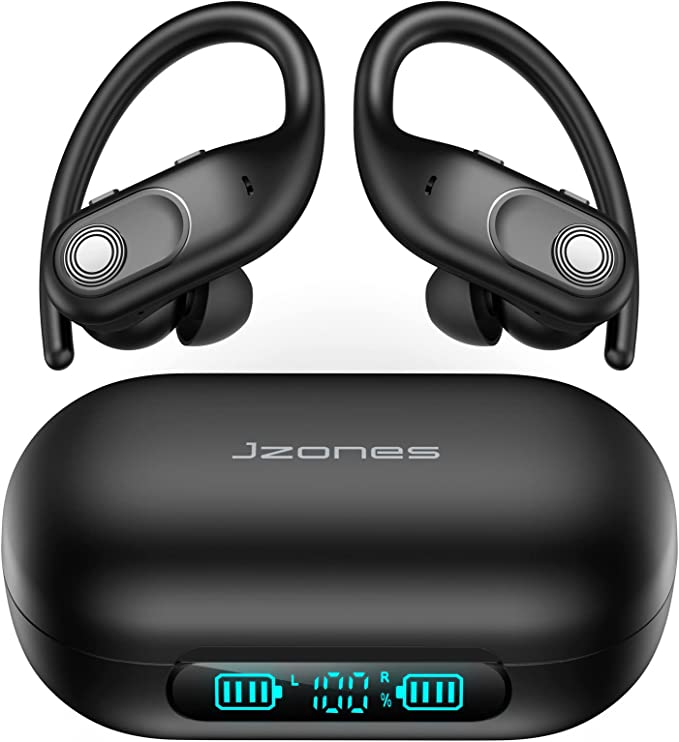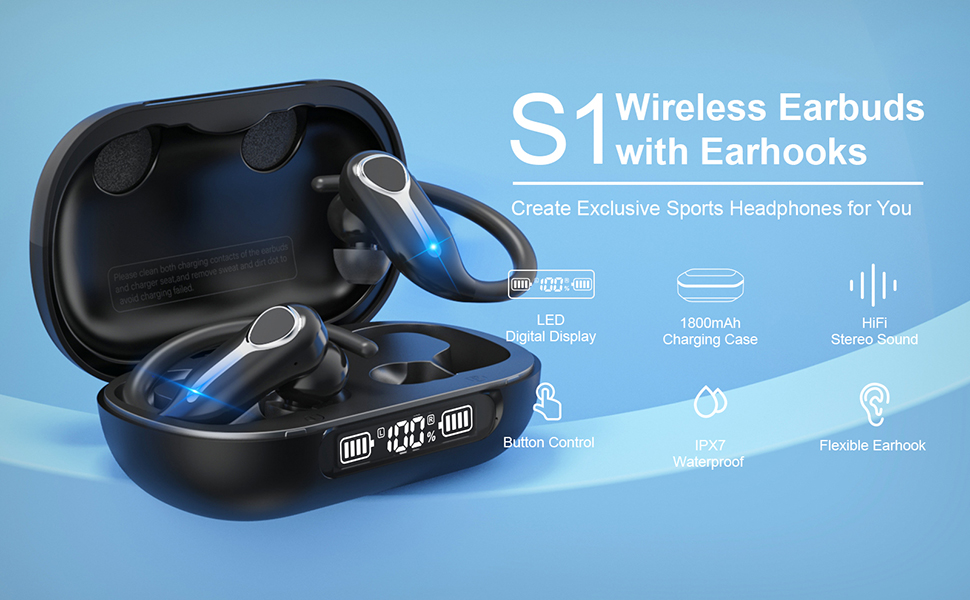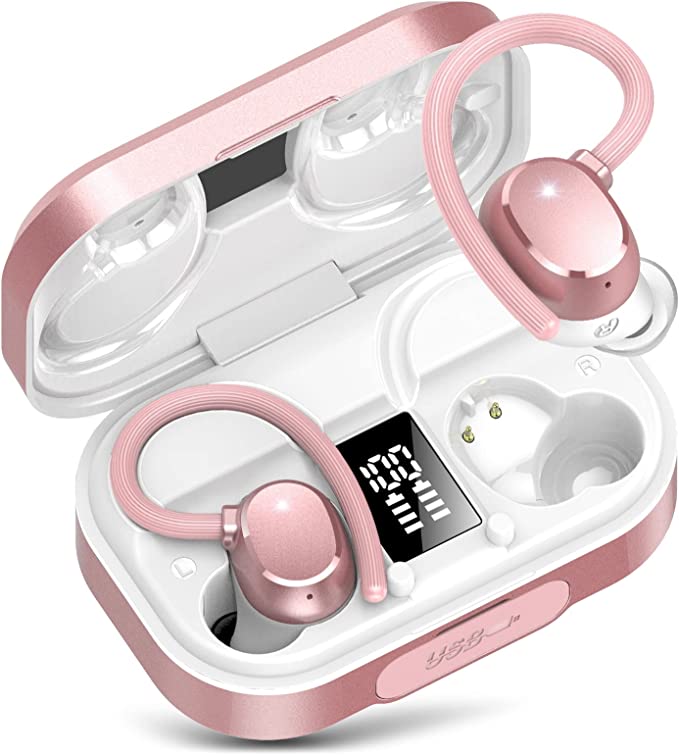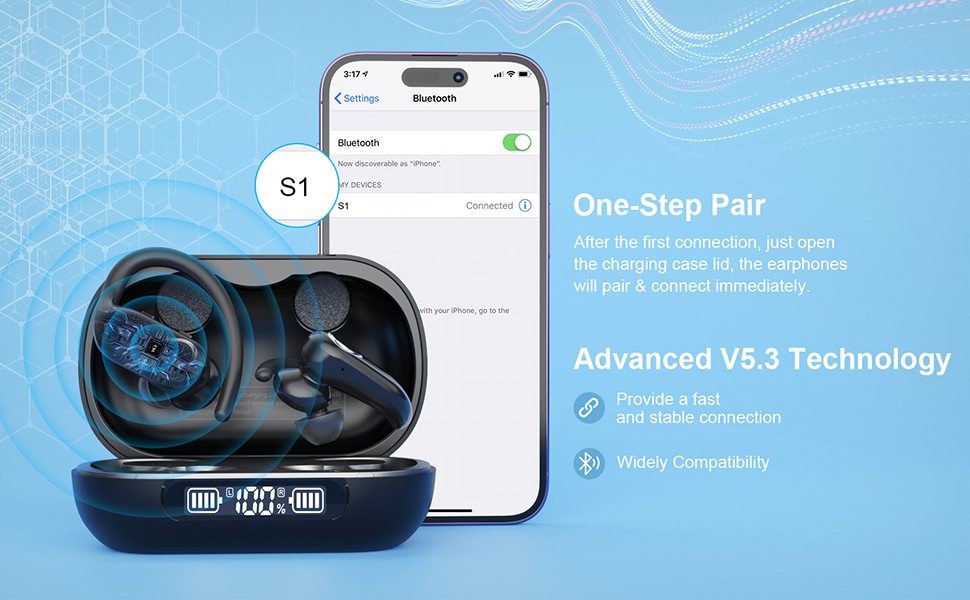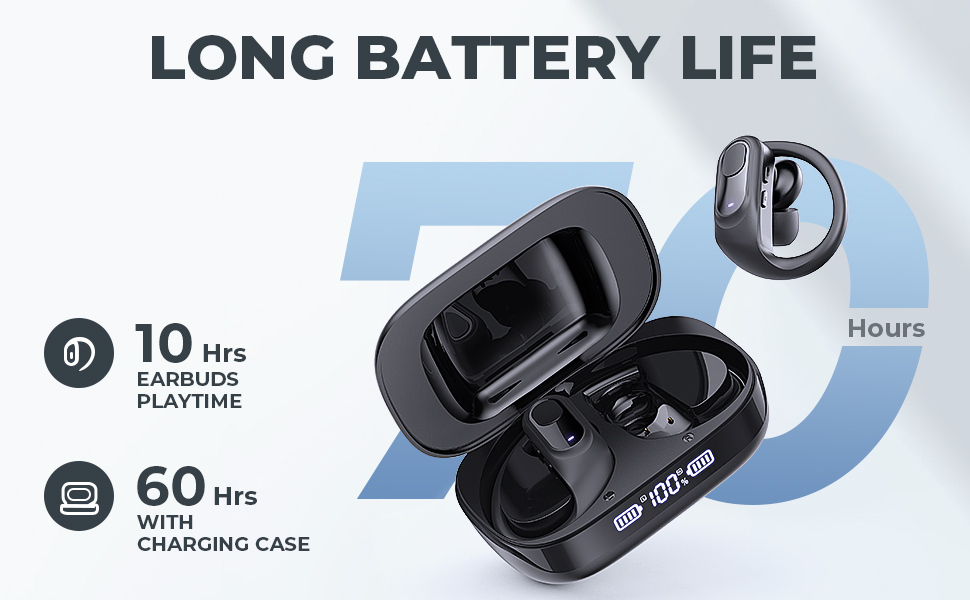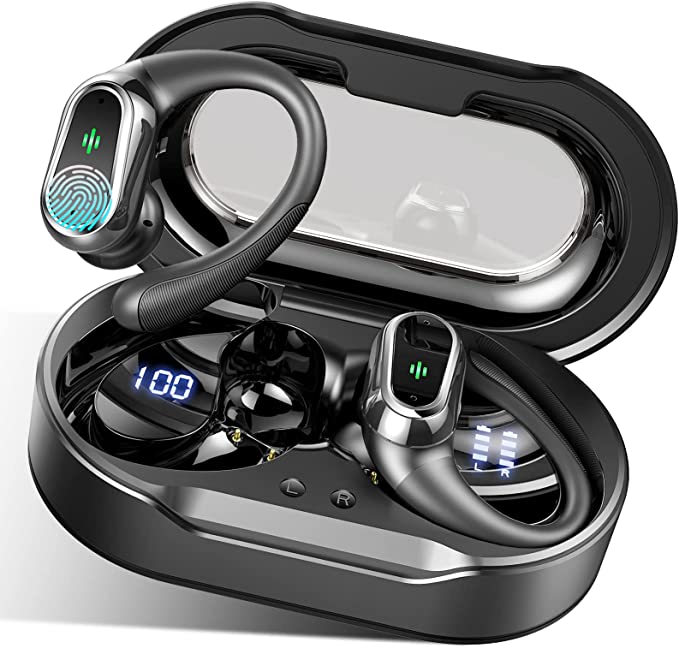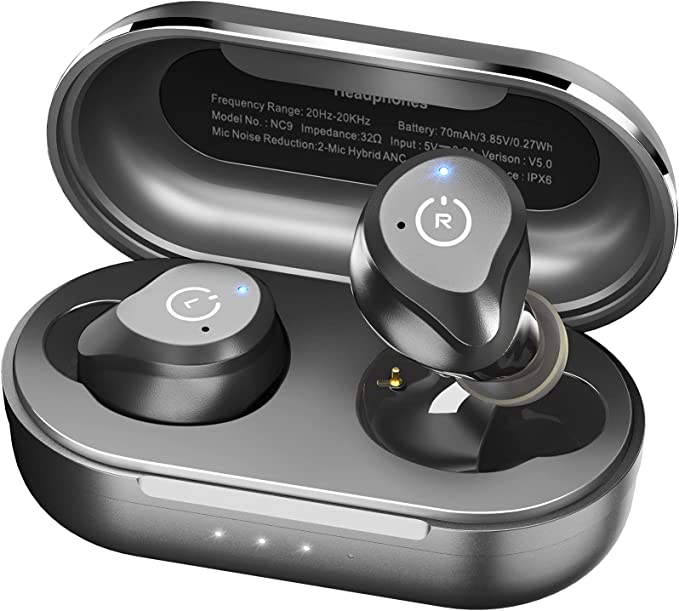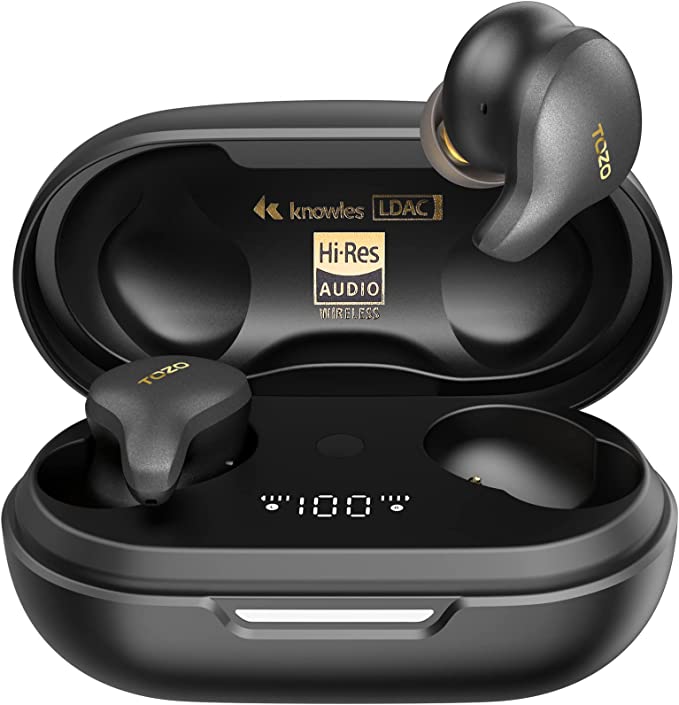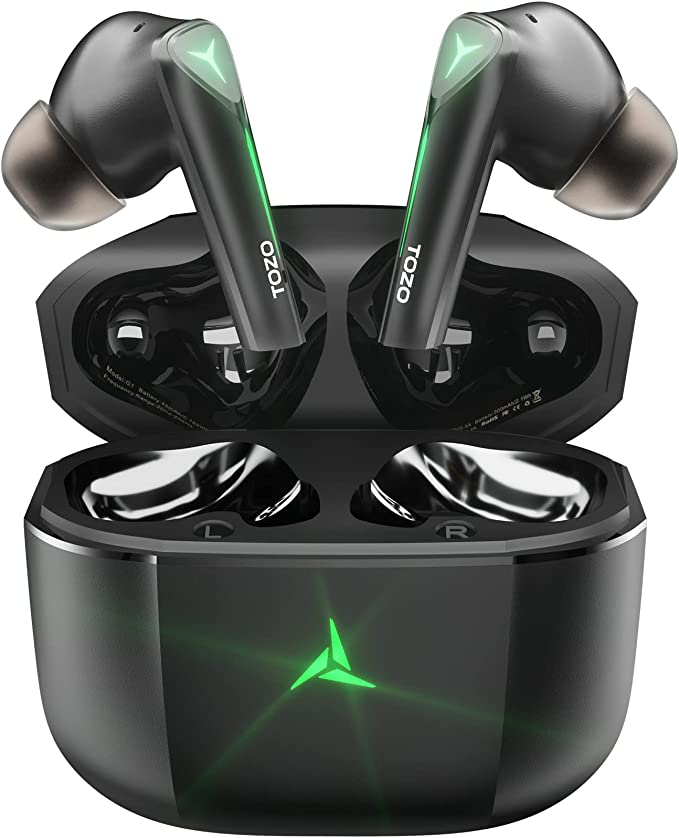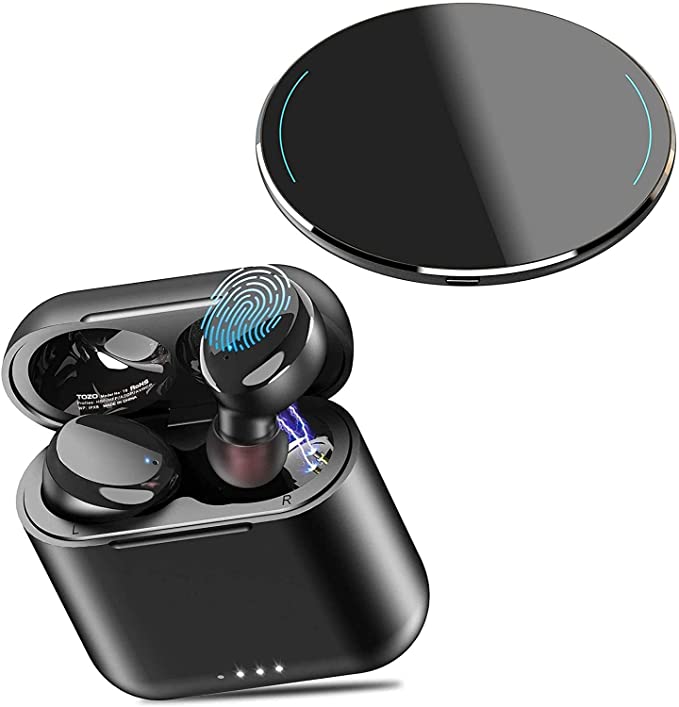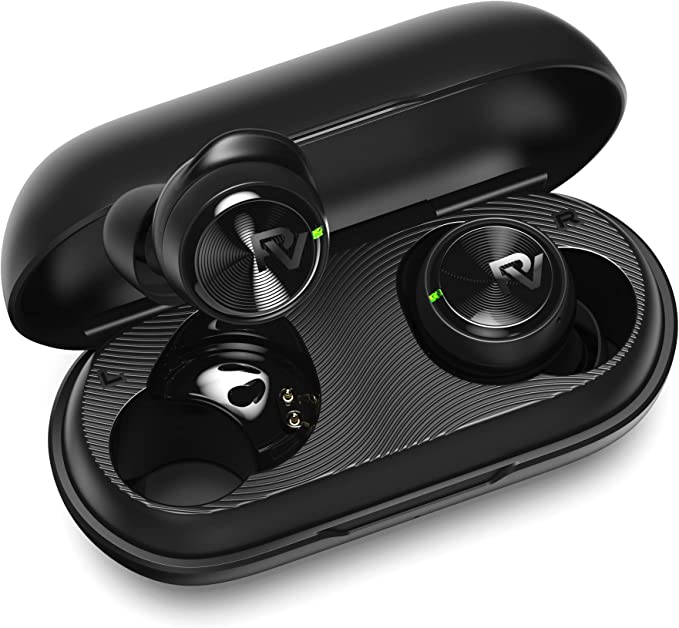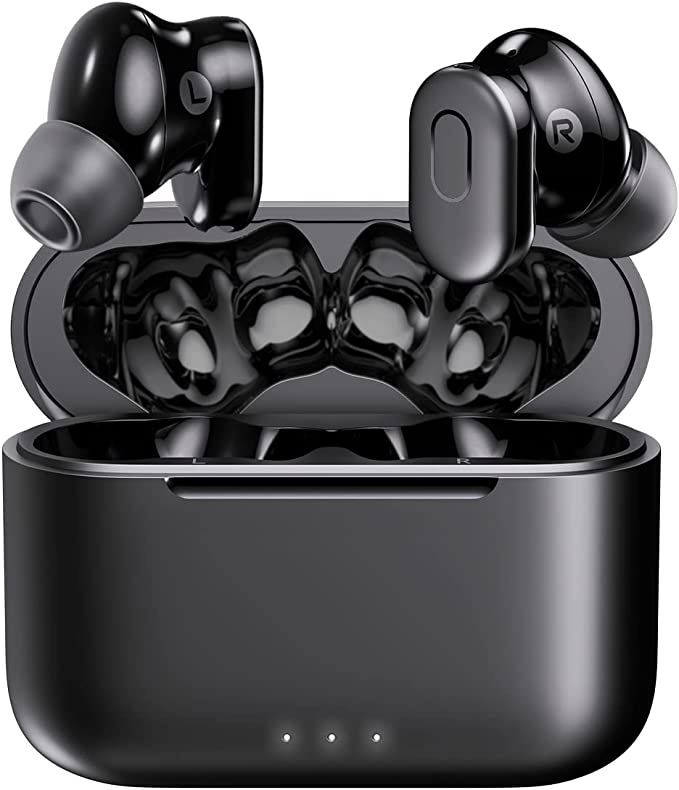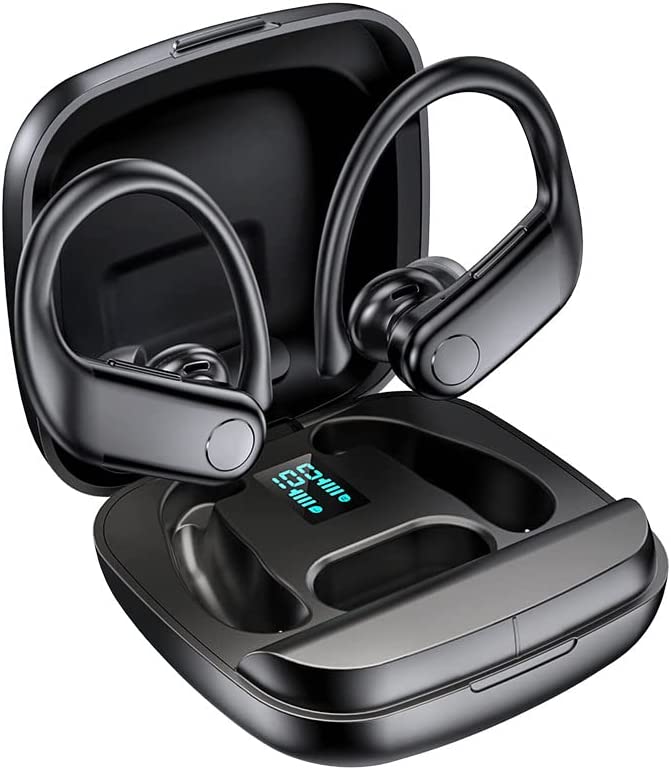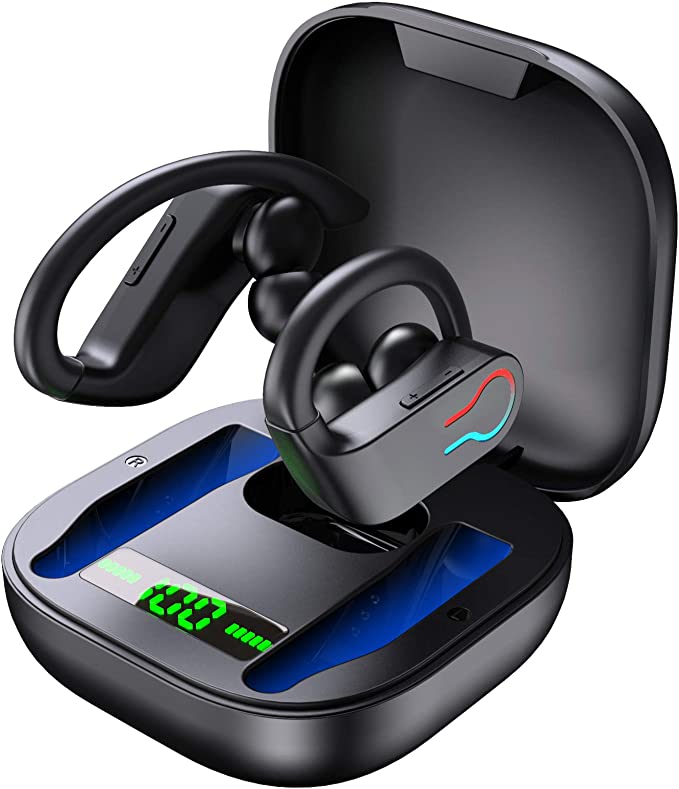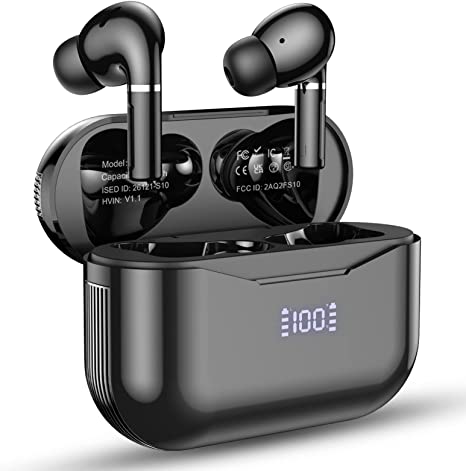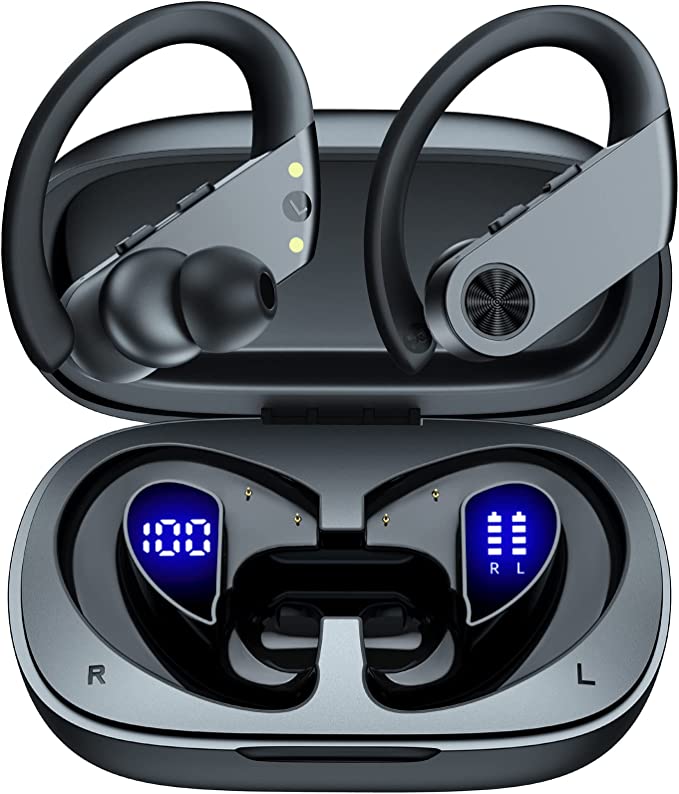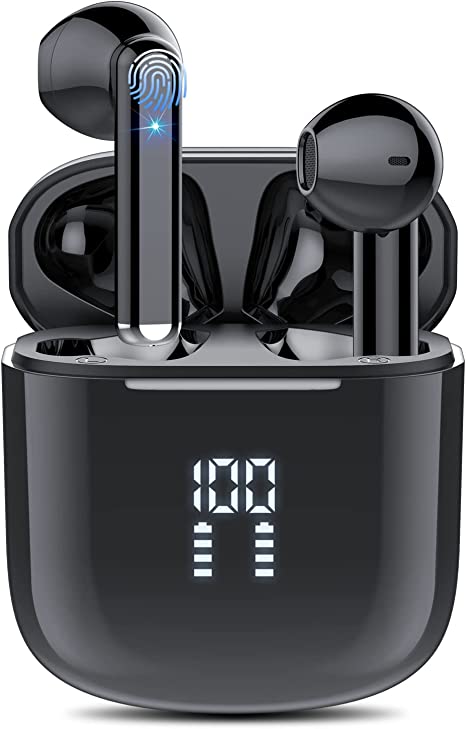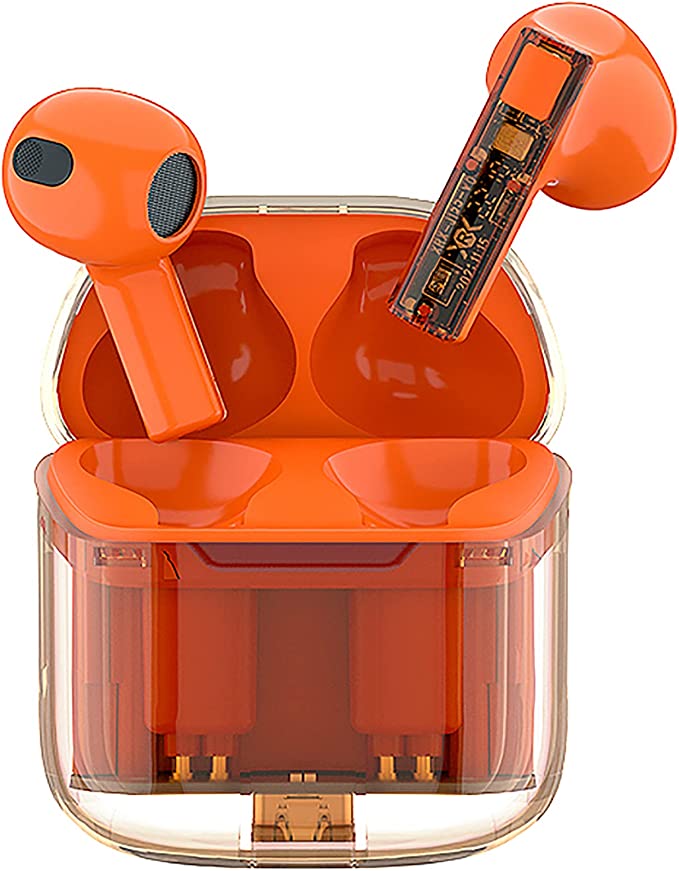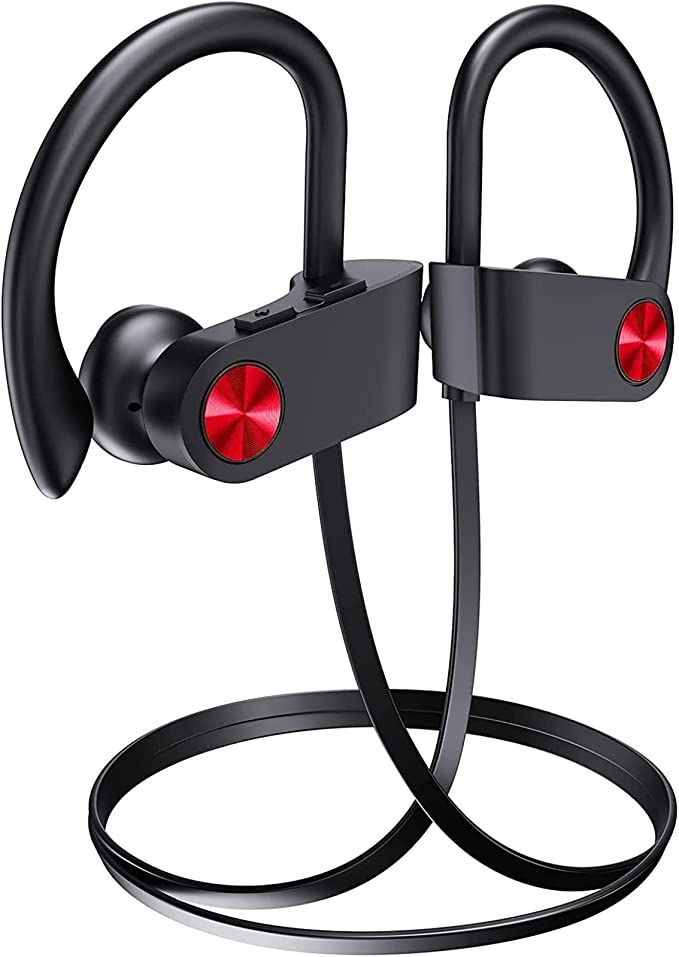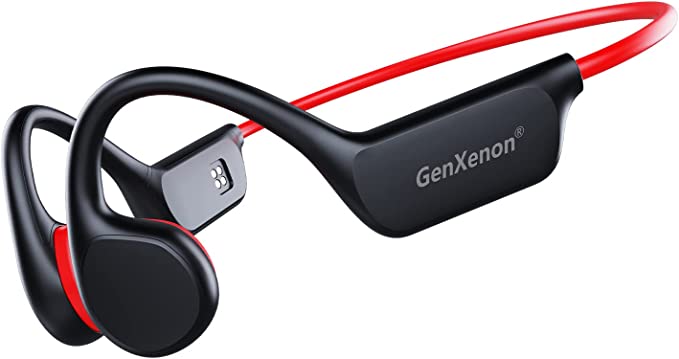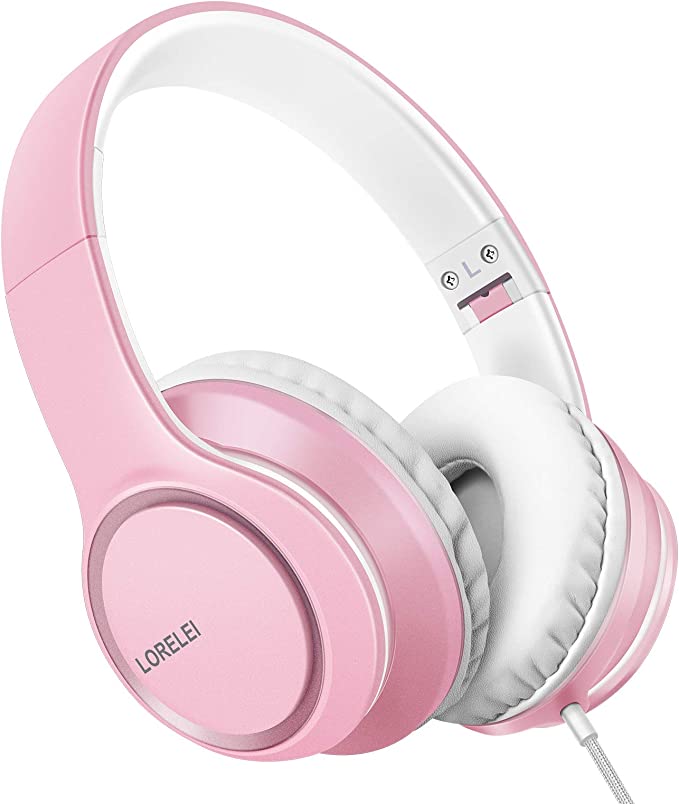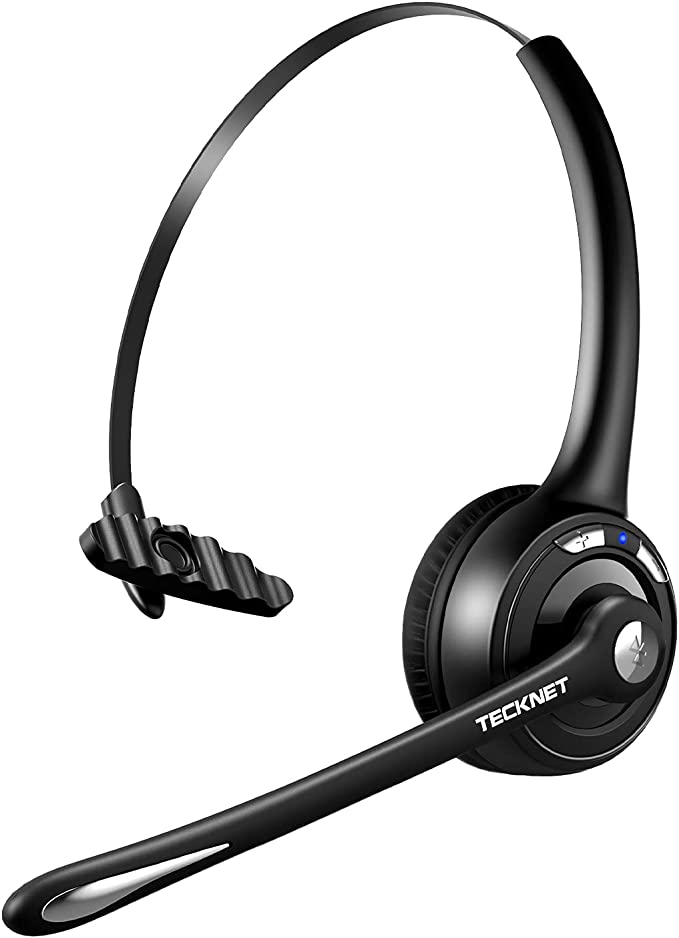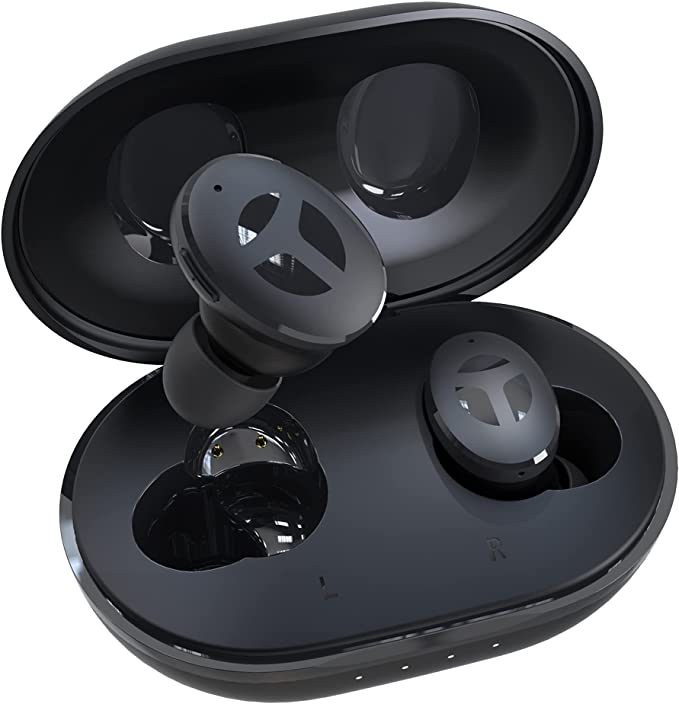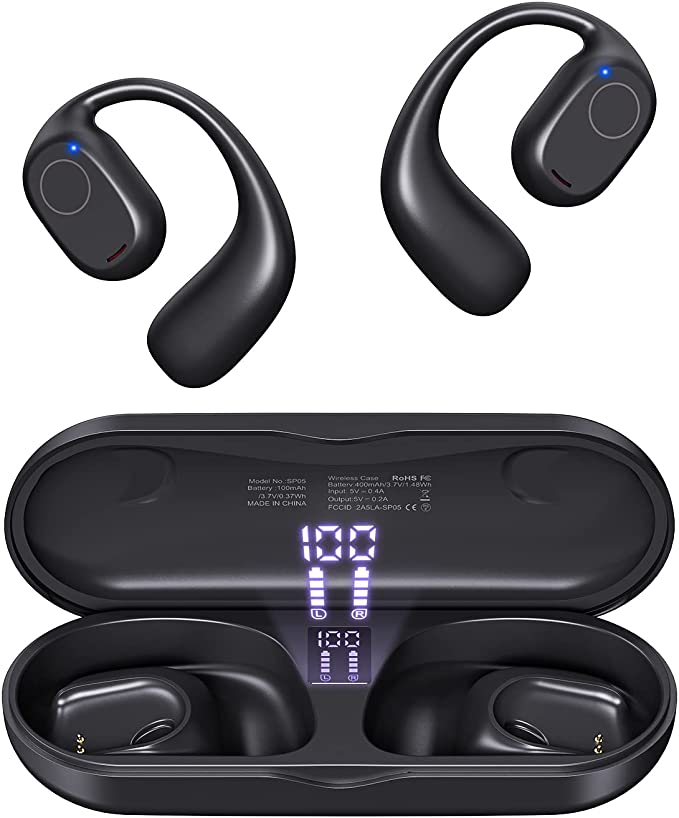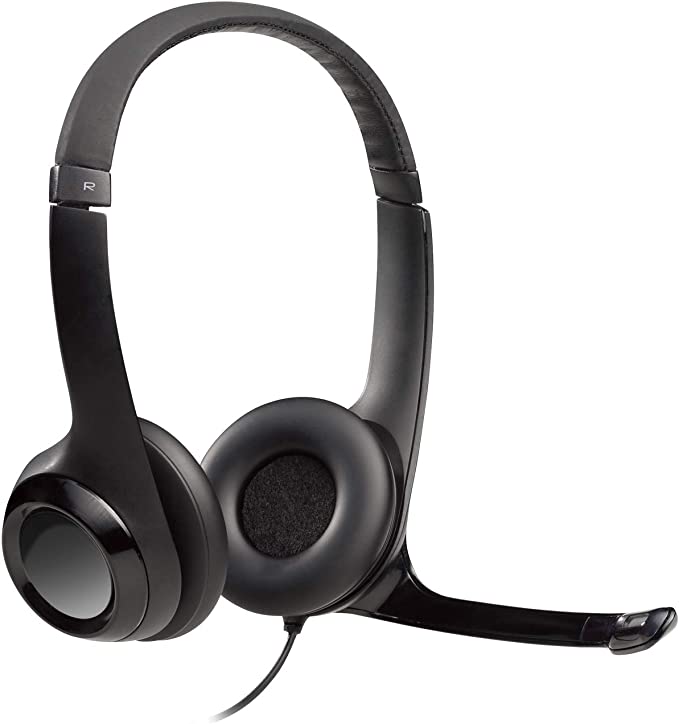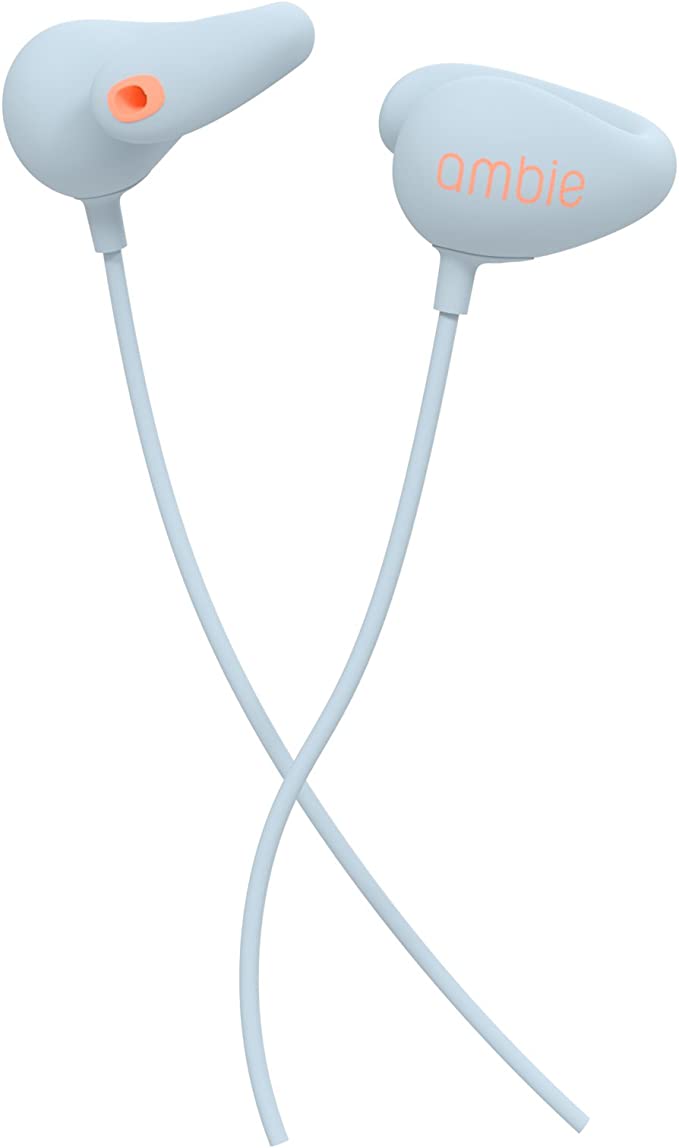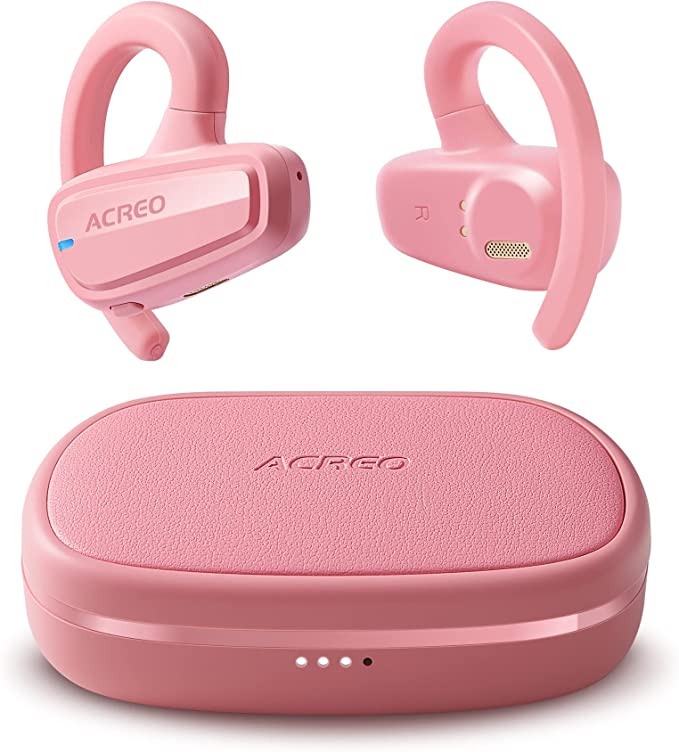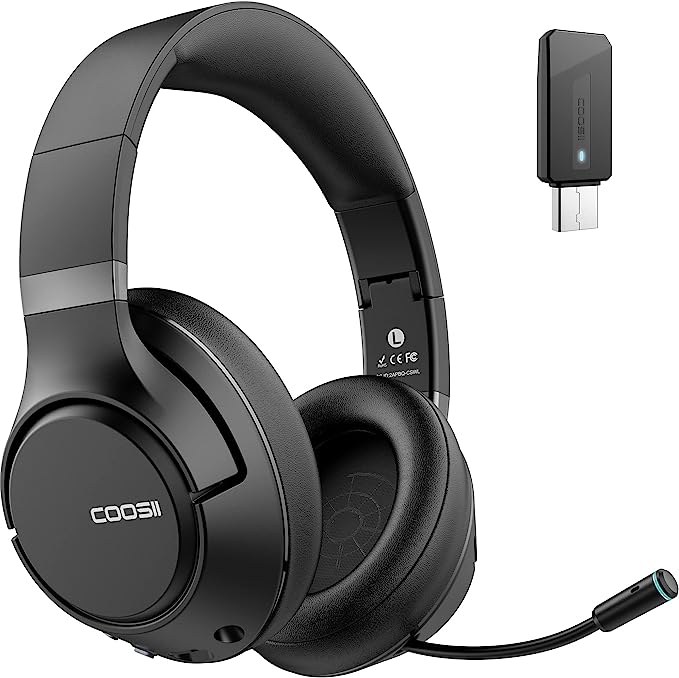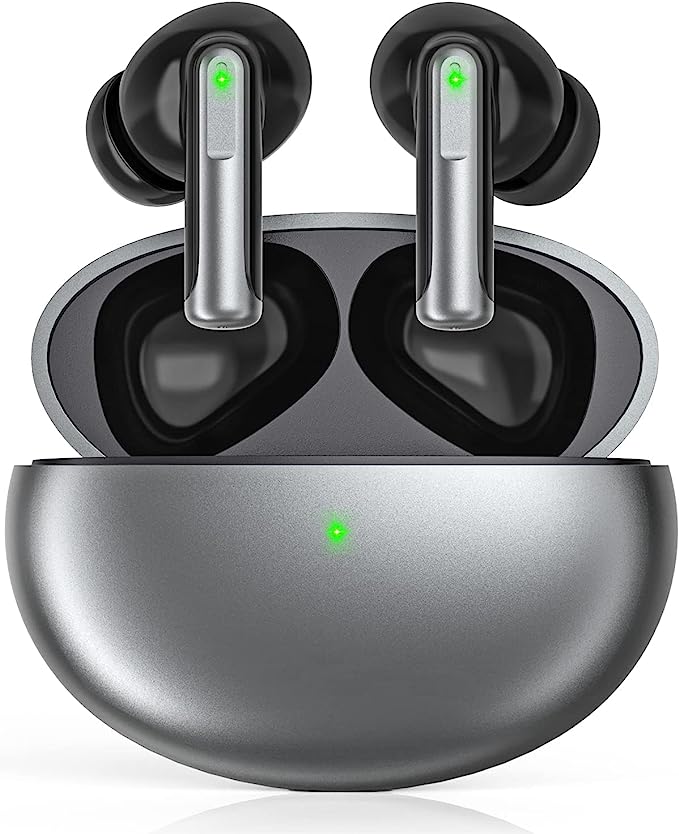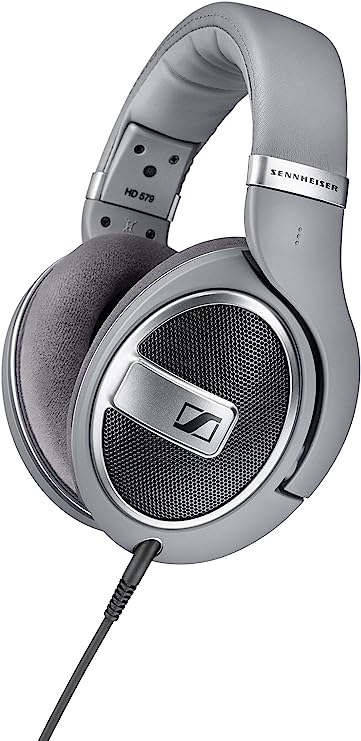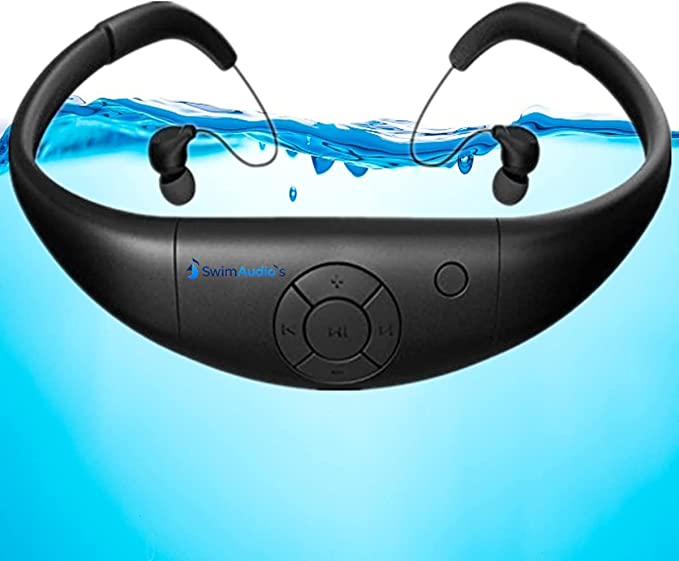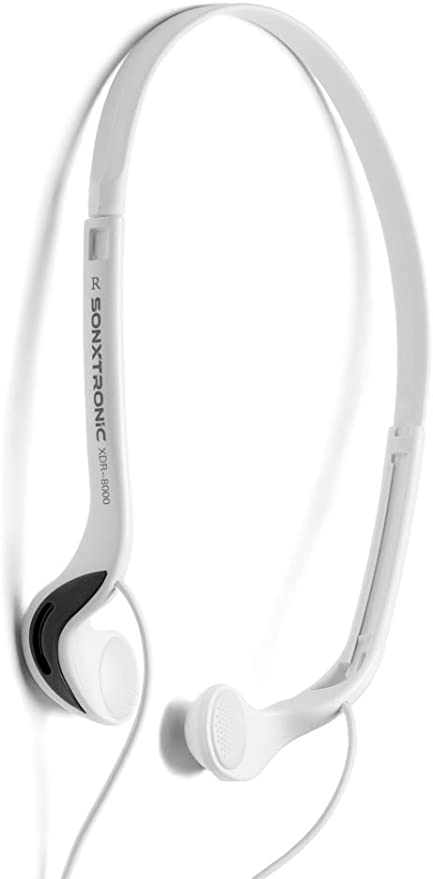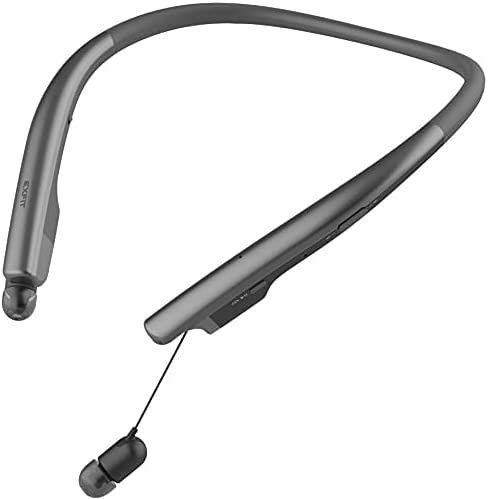DOBOPO A20-1 Wireless Earphones: A Sweat-Proof Battery Beast for Workouts
Update on July 3, 2025, 6:12 a.m.
For many of us who embrace an active lifestyle, finding the perfect audio companion is a constant quest. We need earbuds that not only deliver great sound but also endure the rigors of our routines—be it a rain-soaked run, a sweat-drenched gym session, or simply the demands of a long, busy day. The challenge often lies in striking a balance between robust performance and technological elegance. Enter the DOBOPO A20-1 Wireless Earbuds, a recent entry into the market that promises to meet these needs, driven by a thoughtful blend of engineering and design. Let’s delve into the science that makes these earbuds a compelling option for the modern exerciser.

The Marathon Runner’s Power Pack: Deconstructing 50 Hours of Playtime
One of the most striking features of the DOBOPO A20-1 is its advertised 50 hours of total playtime. This isn’t just a marketing number; it’s a testament to the synergistic design of its lithium-ion battery system and advanced power management. In the world of portable electronics, lithium-ion batteries are the workhorses due to their high energy density, meaning they pack a lot of power into a small, lightweight package.
The A20-1 itself offers up to 8 hours of continuous playback on a single charge. This impressive single-charge endurance is partly thanks to the Bluetooth 5.3 chip. Bluetooth Low Energy (LE), a key component of modern Bluetooth standards, significantly reduces power consumption compared to older versions. Think of it like this: an older Bluetooth connection might be a constantly roaring engine, while Bluetooth LE is a smart hybrid, only drawing power when needed and efficiently idling the rest of the time. This “smart idling” minimizes drain, allowing your earbuds to keep playing your favorite motivational playlists for longer.
But the real secret to the 50-hour total lies with the charging case. This isn’t merely a storage unit; it’s a portable power bank, providing an additional 42 hours of playtime. This case houses its own rechargeable lithium-ion battery and acts as a sophisticated power management system. When you dock the earbuds, the case’s internal circuitry initiates charging, replenishing the earbud batteries efficiently. The intuitive LED display on the case provides a real-time readout of both the case’s remaining power and the individual charge levels of each earbud. This visual feedback system is an elegant solution to a common user anxiety: wondering if your earbuds will die mid-workout. Users appreciate this transparency, noting how the “charging system is great” and the display “indicates the charge that remains as well as when each individual earpiece is too.”
However, no system is entirely without its quirks. Some users have reported isolated issues, such as one earbud (often the left) not charging consistently. While not indicative of a universal design flaw, such feedback highlights the intricate nature of the charging contact points and the need for proper seating within the case. It also underscores the importance of quality control in mass production, where even minor inconsistencies can impact user experience. The fast-charging feature, offering 2 hours of audio enjoyment with just 15 minutes of charging, leverages principles of rapid power transfer, efficiently pushing current into the battery cells to quickly get you back in action.

Defying the Elements: The Science Behind IP7 Waterproofing
For anyone who pushes their limits, sweat is inevitable, and unpredictable weather can turn a pleasant outdoor activity into a soggy one. This is where the IP7 waterproof rating of the DOBOPO A20-1 becomes critically important. The “IP” in IP7 stands for Ingress Protection, a standard set by the International Electrotechnical Commission (IEC 60529) that classifies and rates the degree of protection provided by mechanical casings and electrical enclosures against intrusion from solid objects and water.
The “7” in IP7 signifies a high level of water resistance. Specifically, an IPX7 rating means the device can be submerged in up to 1 meter (3.3 feet) of water for up to 30 minutes without harmful effects. This isn’t just about surviving an accidental dunk; it’s about providing robust protection against sweat, heavy rain, and splashes during intense workouts. The engineering behind this involves multiple layers of defense: meticulously designed sealing around all potential entry points (like the ear tip nozzles and charging contacts), and often the application of hydrophobic coatings on internal components. These coatings repel water at a molecular level, preventing it from adhering and causing short circuits or corrosion.
From a user perspective, IP7 protection translates directly into peace of mind. You don’t have to worry about a sudden downpour ruining your run, or intense perspiration during a gym session damaging your earbuds. It allows the A20-1 to be a truly reliable companion for activities like “running, jumping, fitness, yoga,” as the product description highlights. This level of protection elevates the earbuds from mere audio devices to durable tools designed for active environments.

The Perfect Perch: Engineering a Secure and Comfortable Fit
One of the most common frustrations with earbuds during physical activity is their tendency to fall out. The DOBOPO A20-1 addresses this with its innovative over-ear earhook design. This isn’t just a stylistic choice; it’s an ergonomic solution rooted in biomechanics.
The earhook works by distributing the weight and pressure of the earbud across a larger area of the outer ear (the helix and antihelix), rather than solely relying on the ear canal for support. This creates a three-point fit system: the ear tip inside the canal, the main body resting in the concha, and the hook gently curving around the back of the ear. This design leverages the natural contours of the ear to create a secure anchor, minimizing movement even during dynamic activities like burpees or jumping jacks, where conventional earbuds might lose their grip. Users consistently praise this aspect, with many noting how the earhooks “keep the buds in when I workout” and allow them to “stay in place through vigorous activity.” Some even forget they’re wearing them, calling them “unnoticeable” and “comfortable for hours.”
The inclusion of three different sizes of ear tips (S/M/L) further refines this personalized fit. The ear tip is crucial for both comfort and sound quality; a proper seal in the ear canal is essential for effective bass response and passive noise isolation. By allowing users to choose the optimal size, the A20-1 caters to a wider range of ear anatomies, ensuring perfect wearing comfort “even for small ears,” as user feedback confirms. While the overall design might appear “a little big” to some, this often refers to the charging case or the visual profile of the earbud itself, not necessarily the comfort of the fit, which remains a strong point for active users.

Beyond Connection: The Brains of Bluetooth 5.3
In the realm of wireless audio, Bluetooth technology serves as the invisible bridge connecting your earbuds to your device. The DOBOPO A20-1 is equipped with the latest Bluetooth 5.3 chip, a significant leap forward from older standards like Bluetooth 4.2 or even early Bluetooth 5.0 iterations. But what does this technical upgrade actually mean for you?
At its core, Bluetooth 5.3 offers several key enhancements. Firstly, it provides faster pairing. When you remove the earbuds from their case after the initial connection, the “one-step pairing” feature quickly re-establishes the link, minimizing delay. This is akin to a computer’s boot-up process becoming almost instantaneous. Secondly, and critically for active users, Bluetooth 5.3 ensures a more stable connection. It achieves this through advancements in channel classification, offering significantly improved protection against interference signals. Imagine a crowded radio band; Bluetooth 5.3 is better at finding clear channels and avoiding static, leading to seamless audio, whether you’re streaming music or on a call. This enhanced stability is a direct benefit of the latest standard, reducing frustrating dropouts.
Furthermore, Bluetooth 5.3 is optimized for lower power consumption, which, as discussed earlier, directly contributes to the A20-1’s impressive battery life. It also can offer lower latency, reducing the delay between audio and video, which is crucial for watching videos or gaming, though its primary benefit for the A20-1 is the robust connection and power efficiency. While many earbuds feature “single-point” connectivity (connecting to one device at a time), some advanced models offer “multipoint” technology, allowing simultaneous connection to two devices. User feedback on the A20-1 has noted its single-point limitation (requiring manual disconnection from one device to connect to another). This is a common design choice in many earbuds and is not a flaw in Bluetooth 5.3 itself, but rather how the earbud’s firmware utilizes the standard. For dedicated workouts, single-point is usually sufficient, as focus remains on one device.

Your Voice, Amplified: The Precision of ENC Microphones
Clear communication is just as important as clear audio, especially when taking calls on the go. The DOBOPO A20-1 features dual microphones on each earbud and utilizes Environmental Noise Cancellation (ENC) technology. This system is designed to isolate your voice from distracting background sounds, ensuring that your conversation partner hears you, not the rumble of the gym or the street noise.
ENC works through sophisticated Digital Signal Processing (DSP) algorithms. Essentially, the two microphones on each earbud serve distinct purposes: one primarily captures your voice, while the other captures ambient noise. The DSP then intelligently analyzes the incoming audio, identifying and separating your speech frequencies from the background noise. It’s like a tiny, intelligent sound engineer inside your earbud, filtering out the unwanted “static” so your voice can shine through. This differs from Active Noise Cancellation (ANC), which focuses on reducing noise for the listener in the earbuds, whereas ENC focuses on reducing noise for the person on the other end of your call.
Users have praised the call quality, remarking that their “voice clearly to your conversation partner without disturbing ambient noise” and that “sound quality during phone calls is crisp and clear.” However, it’s also important to acknowledge inherent limitations, particularly concerning wind noise. As some users discovered, while ENC is excellent at filtering out constant background hums, sudden, turbulent airflows (like during cycling or with an open car window) can still overwhelm the microphones. This is a common challenge for any microphone system exposed to high wind, as the physical force of the air against the microphone diaphragm creates its own distinct, difficult-to-filter noise. Despite this, for typical environments like a gym, office, or bustling street, the ENC provides a significantly improved calling experience.
The Soundstage in Your Ear: What 13mm Drivers Deliver
Ultimately, earbuds are about delivering sound. The DOBOPO A20-1 promises a “truly natural, authentic sound and powerful bass performance” thanks to its 13mm speaker drivers. But what does “13mm” signify in the world of acoustics?
In dynamic drivers, like those found in most earbuds and headphones, the size of the driver diaphragm can significantly influence sound characteristics. A larger driver often has the potential to move more air, which directly correlates with its ability to produce deeper, more resonant bass frequencies. Think of a large subwoofer in a home theater system – it moves a lot of air to create those thumping low notes. While earbuds are tiny, the principle holds: a 13mm driver is notably larger than the “normal” drive areas often found in smaller, less expensive earbuds, giving it a theoretical advantage in low-frequency reproduction. This larger surface area allows for a more impactful bass response, enhancing the richness of music.
Beyond just bass, a well-engineered 13mm driver can also contribute to a broader soundstage, making the audio feel more spacious and less confined to your head. It can allow for clearer separation of instruments and vocals, contributing to a more “natural, authentic sound.” User feedback echoes this, with some finding the sound quality “very very good” and others noting a “crisper sound” compared to other models. While audiophiles might seek more nuanced sound profiles from higher-end devices, for the average listener, especially during active pursuits where punchy bass and clear audio are paramount, the 13mm drivers in the A20-1 deliver an enjoyable and immersive listening experience.
The Unseen Partner for Your Active Life
The DOBOPO A20-1 Wireless Earbuds are a compelling case study in how thoughtful engineering addresses the specific demands of an active lifestyle. From the science of their long-lasting battery and robust waterproofing to the biomechanics of their secure fit and the sophisticated signal processing in their microphones, every feature serves a purpose. They are designed not just to play music, but to seamlessly integrate into your routine, providing a reliable, high-quality audio experience without interruption. In a world where every minute counts, having technology that keeps pace with your ambition is truly invaluable.
